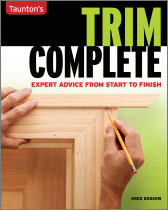Tips for Choosing and Using Lumber and Sheet Goods
Consider strength, price, finish quality, and workability to pick the best materials for your trim carpentry projects.

If you choose to paint your trim, it is cheaper to use manufactured substitutes than solid wood. Keep in mind that wood is stronger and more rigid (making it a better choice for window jambs and stools) and its dust and fumes during milling processes are less toxic. If you do want to use solid wood for painting choose stable and relatively inexpensive woods such as poplar or pine. After the piece has been molded it is then preprimed. This produces a molding that is straight and free of defects—though the glue joints may transmit through the paint requiring some filling and sanding.
MDF is also a good choice for paint-grade millwork. It paints and machines well and it has a hard surface that resists dings and dents. It’s also less expensive than solid wood. Its disadvantages are its weight, lack of stiffness, and susceptibility to moisture. If MDF gets wet, it expands, never to return to its original shape. I don’t recommend it for window extension jambs or for stools. MDF also offers poor purchase for screws along its edges.
Controlling Moisture ContentChanges in moisture content can cause the joints in your finely fit trim job to open up. While you can’t control seasonal changes in moisture, you can make sure the stock you use is as dry as possible. protect it from rain during transit and avoid direct contact with concrete floors during storage. |
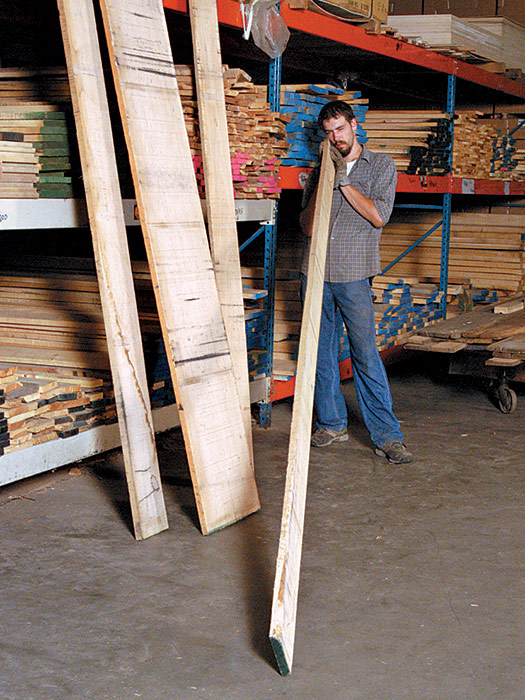
Lumber
When working with natural materials, it is important to be able to identify lumber defects since they affect both appearance and workability. Ideally, material used for interior trim work should be flat and straight and even-grained.
Wood, as an organic material, can change shape and size depending upon the amount of moisture it is holding relative to the surrounding air. Distortion of a board can make wood difficult—and sometimes potentially dangerous—to work with. The best strategy is not to use these boards. There are several types of distortion.
- Bow is a length-wise bend.
- Cup occurs when the edges of the board turn up.
- Twist make the board higher and lower across the diagonal.
- Crook (also called wain) is a bow along the edge, often caused by sapwood on one edge.
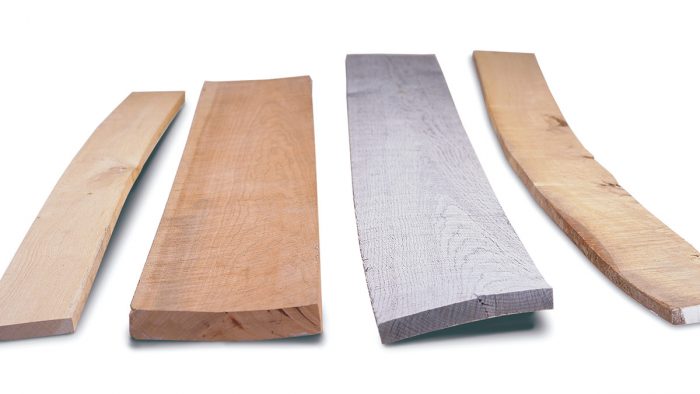
Cupping is more common in wider boards. To prevent cupping after installation on pieces of lumber 6 in. or more in width (if they will have a non-showing “back” side) rip at least three 1⁄4-in. deep kerfs the full length of the board on the back side. This helps prevent the cupping that occurs from uneven drying, which can start as soon as the board is installed and the first coat of sealer goes onto the finished surface.
Sheet goods
The most common plywood is a 4-ft. by 8-ft. panel composed of odd-numbered layers of veneer laid up with grain running at right angles to one another (to ensure dimensional stability). Other varieties are made of single facing veneers laid over a substrate of solid wood “lumber core” or a “solid core” of MDF or particleboard. As a substrate, MDF offers the most stable and flattest surface for the facing veneers.
Cabinet grade plywood such as used for ceilings or wainscot is often faced with hardwood veneer such as oak, birch, or luan mahogany. Other species are available through special order. Plan to cover edges that will be exposed with veneer edge-banding or solid-wood strips.
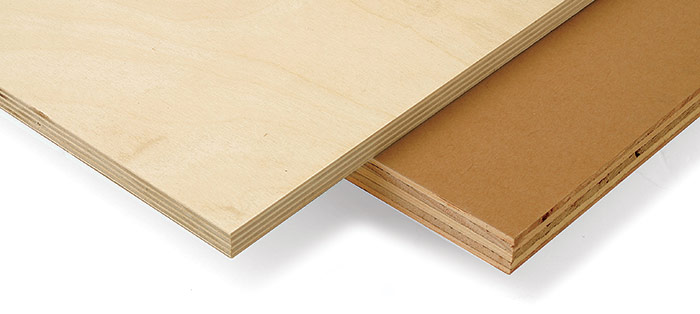
MDF panels are an engineered product made entirely from waste wood—usually pine lumber ground to a fine dust and compacted with a resin bonding agent. The product is defect-free and features a very uniform density that lends itself well to shaping and cutting. Unfortunately, MDF has little structural strength and must be supported (especially when used for shelving).
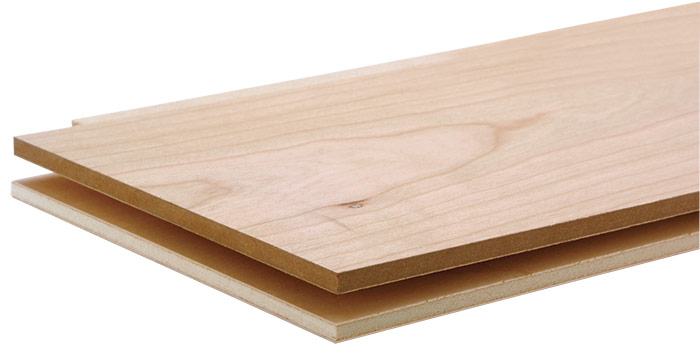
| WARNING: A 4 ft. X 8 in. sheet of 3⁄4-in. thick MDF weighs about one hundred pounds! Be careful handling it. sawing or routing it creates mountains of very fine dust, so be sure to wear a dust mask. |
Excerpted from Trim Complete: Expert advice from start to finish by Greg Kossow
Available at Amazon.com.

